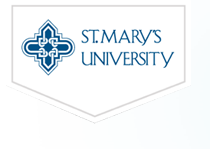Files
Download Full Text (1.3 MB)
Contributor
Sven Hoekstra; Ben Enslow
Digital Publisher
Digital Commons at St. Mary's University
Publication Date
Spring 2025
Keywords
high blood pressure; passive heat therapy (HEAT); cardiovascular disease; contrast heat therapy (CONTRAST);
Description
There is a growing number of people being affected by hypertension, often referred to as high blood pressure. Chronic high blood pressure (>130/80 mmHg) affects 45% of U.S. adults (Huguet et at., 2021). Chronic hypertension can have catastrophic outcomes, as it significantly increases the risk of stroke, heart attack, kidney failure, and heart failure. On top of this, this cardiovascular disease is often referred to as a "silent killer," because it tends to not present symptoms until serious damage already occurred. In addition to the negative effects on the individual, hypertension constitutes a large public heath burden, costing over $50 billion annually in the U.S. alone.
Pharmacological treatments are effective at treating hypertension, but they often come with undesirable side effects. These include dizziness, fatigue, electrolyte imbalances, or reduced quality of life. The best way to control blood pressure is through lifestyle changes, especially regular exercise. However, many individuals are unable to engage in physical activity due to physical disabilities, age-related mobility issues, obesity, chronic pain, or recovery from surgery or injury. Given these limitations, research has been exploring alternative, nonpharmaceutical interventions. Among these are the therapies that will be analyzed in this research study: passive heat therapy (HEAT) and contrast heat therapy (CONTRAST). HEAT involves exposure to heat, in this study through a Finnish sauna, and causes vasodilation enhancing blood flow, reducing vascular resistance, and increasing shear stress on vessel walls. Studies have shown that HEAT improves endothelial function (Brunt et al., 2016), reduces arterial stiffness and systolic blood pressure (Lee et al., 2022), and enhances coronary blood flow and overall cardiovascular resilience (Cheng & MacDonald, 2019). Then, CONTRAST involves alternating between heat and cold, using saunas and ice baths in this research project. This therapy causes cyclic vasodilation and vasoconstriction, and this alternating pressure shifts may have added benefits for cardiovascular health. It is hypothesized that CONTRAST results in greater cardiovascular responses than HEAT alone, potentially offering a more effective approach for the long-term management of blood pressure.
Format
Size
1 page
City
San Antonio, Texas
Creative Commons License

This work is licensed under a Creative Commons Attribution-NonCommercial-No Derivative Works 4.0 International License.

Included in
Analytical, Diagnostic and Therapeutic Techniques and Equipment Commons, Cardiovascular System Commons


